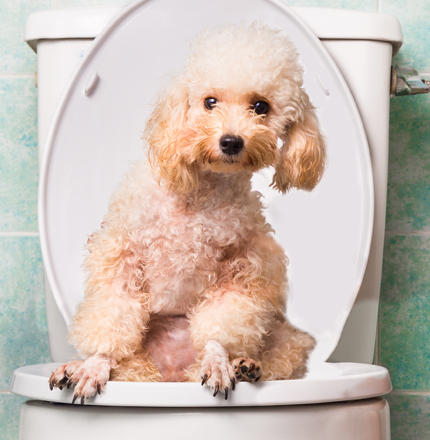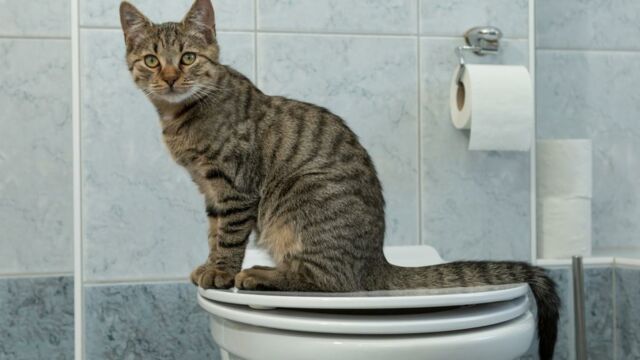Key Reasons Why Animal Waste Ought to Never Be Flushed Down the Toilet
Key Reasons Why Animal Waste Ought to Never Be Flushed Down the Toilet
Blog Article
They are making several good annotation related to Don't Flush Your Pets Poo Down The Loo, Vet Warns overall in this article down the page.

When it concerns dealing with waste, especially animal waste, many individuals usually consider the practical choice of flushing it down the toilet. Nevertheless, this apparently simple service can have severe effects for the setting and public health. In this write-up, we'll explore why flushing animal waste down the bathroom is a negative idea and offer alternative techniques for appropriate disposal.
Intro
Correct waste disposal is essential for maintaining environmental sustainability and public health. While it may seem safe to purge animal waste down the commode, it can bring about numerous concerns, both for the environment and human wellness.
Dangers of flushing animal waste
Environmental impact
Flushing animal waste introduces damaging bacteria and microorganisms into waterways, which can adversely influence marine communities. These pathogens can contaminate water resources and injury marine life, interrupting fragile environments.
Public health issues
Animal waste includes hazardous bacteria such as E. coli and Salmonella, which can pose major health risks to human beings. Purging pet waste down the bathroom can pollute water supplies, causing the spread of illness and infections.
Alternatives to flushing
Instead of flushing animal waste down the commode, there are several alternative disposal techniques that are a lot more environmentally friendly and hygienic.
Composting
Composting pet waste is an environment-friendly means to dispose of it. By composting, raw material is broken down right into nutrient-rich soil, which can be used here to fertilize gardens and plants.
Landfill disposal
Getting rid of pet waste in a land fill is an additional option. While not as eco-friendly as composting, it is a more secure option to flushing, as it avoids the contamination of water resources.
Pet dog waste disposal systems
There are specific pet dog garbage disposal systems offered that securely and hygienically get rid of pet waste. These systems often make use of enzymes to break down waste and remove odors.
Actions to correct animal waste disposal
To ensure correct disposal of pet waste, follow these actions:
Scooping and landing waste
Regularly scoop and bag animal waste making use of biodegradable bags. This protects against waste from infecting the environment.
Using assigned waste containers
Dispose of bagged pet waste in assigned waste containers, such as garden compost bins or land fill bins. Prevent flushing it down the bathroom at all costs.
Cleaning litter boxes and family pet locations regularly
Consistently tidy litter boxes and family pet locations to prevent the buildup of waste and germs. Usage pet-safe cleaning products to keep hygiene.
Advantages of proper disposal techniques
Embracing correct disposal approaches for animal waste supplies numerous benefits:
Minimized environmental pollution
Appropriate disposal techniques reduce the threat of environmental pollution, safeguarding rivers and communities from contamination
Minimized risk of water contamination.
By preventing flushing animal waste down the toilet, the risk of water contamination is significantly decreased, protecting public health.
Enhanced sanitation and hygiene
Correct disposal techniques promote better sanitation and health, producing a much safer environment for both humans and pets.
Conclusion
Finally, flushing animal waste down the toilet is harmful to the atmosphere and public health. By embracing alternative disposal methods and adhering to correct waste management techniques, we can lessen the adverse influence of animal waste and add to a cleaner, healthier planet.
Why You Should Never Flush Cat Poop Down the Toilet
A rose by any other name might smell as sweet, but not all poop is created equal. Toilets, and our sewage systems, are designed for human excrement, not animal waste. It might seem like it couldn’t hurt to toss cat feces into the loo, but it’s not a good idea to flush cat poop in the toilet.
First and foremost, assuming your cat uses a litter box, any waste is going to have litter on it. And even the smallest amount of litter can wreak havoc on plumbing.
Over time, small amounts build up, filling up your septic system. Most litter sold today is clumping; it is made from a type of clay that hardens when it gets wet. Ever tried to scrape old clumps from the bottom of a litter box? You know just how cement-hard it can get!
Now imagine just a small clump of that stuck in your pipes. A simple de-clogger like Drano isn’t going to cut it. And that means it’s going to cost you big time to fix it.
For an amusing, graphic tale of what happens when you flush too much litter down the toilet all at once, take a few minutes to read Gene Weingarten’s 2017 Washington Post column “So that’s what happens when you flush cat litter down the toilet.”
Parasitic Contamination
Believe it or not, your healthy kitty may be harboring a nasty parasite. Only cats excrete Toxoplasma in their feces. Yet it rarely causes serious health issues in the cats that are infected. Most people will be fine too if infected. Only pregnant women and people with compromised immune systems are at risk. (If you’ve ever heard how women who are expecting are excused from litter cleaning duty, Toxoplasma is why.)
But other animals may have a problem if infected with the parasite. And human water treatment systems aren’t designed to handle it. As a result, the systems don’t remove the parasite before discharging wastewater into local waterways. Fish, shellfish, and other marine life — otters in particular — are susceptible to toxoplasma. If exposed, most will end up with brain damage and many will die.
Depending on the species of fish, they may end up on someone’s fish hook and, ultimately on someone’s dinner plate. If that someone has a chronic illness, they’re at risk.
Skip the Toilet Training
We know there are folks out there who like to toilet train their cats. And we give them props, it takes a lot of work. But thanks to the toxoplasma, it’s not a good idea.
Leave the toilet to the humans, and accept your future litter cleaning duty.

Consistently tidy litter boxes and family pet locations to prevent the buildup of waste and germs. Usage pet-safe cleaning products to keep hygiene.
Advantages of proper disposal techniques
Embracing correct disposal approaches for animal waste supplies numerous benefits:
Minimized environmental pollution
Appropriate disposal techniques reduce the threat of environmental pollution, safeguarding rivers and communities from contamination
Minimized risk of water contamination.
By preventing flushing animal waste down the toilet, the risk of water contamination is significantly decreased, protecting public health.
Enhanced sanitation and hygiene
Correct disposal techniques promote better sanitation and health, producing a much safer environment for both humans and pets.
Conclusion
Finally, flushing animal waste down the toilet is harmful to the atmosphere and public health. By embracing alternative disposal methods and adhering to correct waste management techniques, we can lessen the adverse influence of animal waste and add to a cleaner, healthier planet.
Why You Should Never Flush Cat Poop Down the Toilet
A rose by any other name might smell as sweet, but not all poop is created equal. Toilets, and our sewage systems, are designed for human excrement, not animal waste. It might seem like it couldn’t hurt to toss cat feces into the loo, but it’s not a good idea to flush cat poop in the toilet.
First and foremost, assuming your cat uses a litter box, any waste is going to have litter on it. And even the smallest amount of litter can wreak havoc on plumbing.
Over time, small amounts build up, filling up your septic system. Most litter sold today is clumping; it is made from a type of clay that hardens when it gets wet. Ever tried to scrape old clumps from the bottom of a litter box? You know just how cement-hard it can get!
Now imagine just a small clump of that stuck in your pipes. A simple de-clogger like Drano isn’t going to cut it. And that means it’s going to cost you big time to fix it.
For an amusing, graphic tale of what happens when you flush too much litter down the toilet all at once, take a few minutes to read Gene Weingarten’s 2017 Washington Post column “So that’s what happens when you flush cat litter down the toilet.”
Parasitic Contamination
Believe it or not, your healthy kitty may be harboring a nasty parasite. Only cats excrete Toxoplasma in their feces. Yet it rarely causes serious health issues in the cats that are infected. Most people will be fine too if infected. Only pregnant women and people with compromised immune systems are at risk. (If you’ve ever heard how women who are expecting are excused from litter cleaning duty, Toxoplasma is why.)
But other animals may have a problem if infected with the parasite. And human water treatment systems aren’t designed to handle it. As a result, the systems don’t remove the parasite before discharging wastewater into local waterways. Fish, shellfish, and other marine life — otters in particular — are susceptible to toxoplasma. If exposed, most will end up with brain damage and many will die.
Depending on the species of fish, they may end up on someone’s fish hook and, ultimately on someone’s dinner plate. If that someone has a chronic illness, they’re at risk.
Skip the Toilet Training
We know there are folks out there who like to toilet train their cats. And we give them props, it takes a lot of work. But thanks to the toxoplasma, it’s not a good idea.
Leave the toilet to the humans, and accept your future litter cleaning duty.

I hope you liked our article about 4 Reasons Why Dog Poop Cleanup is Important. Thanks so much for spending some time to read our article post. Appreciated our blog entry? Please share it. Help others find it. We treasure your readership.
Website Report this page